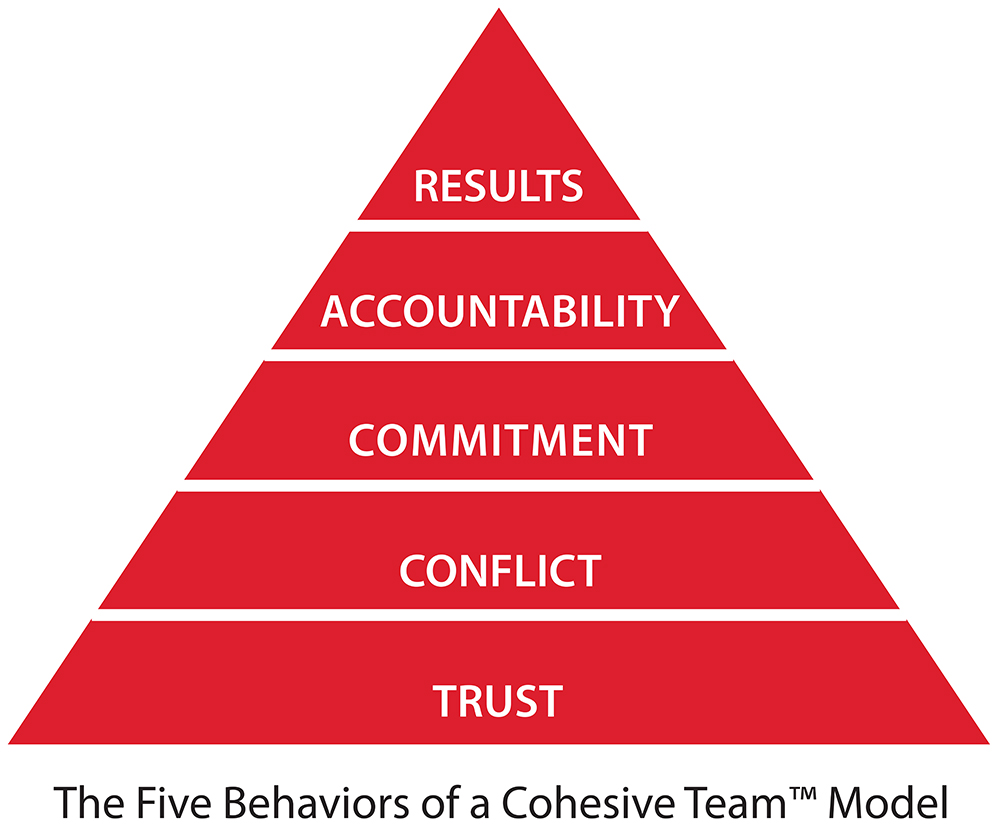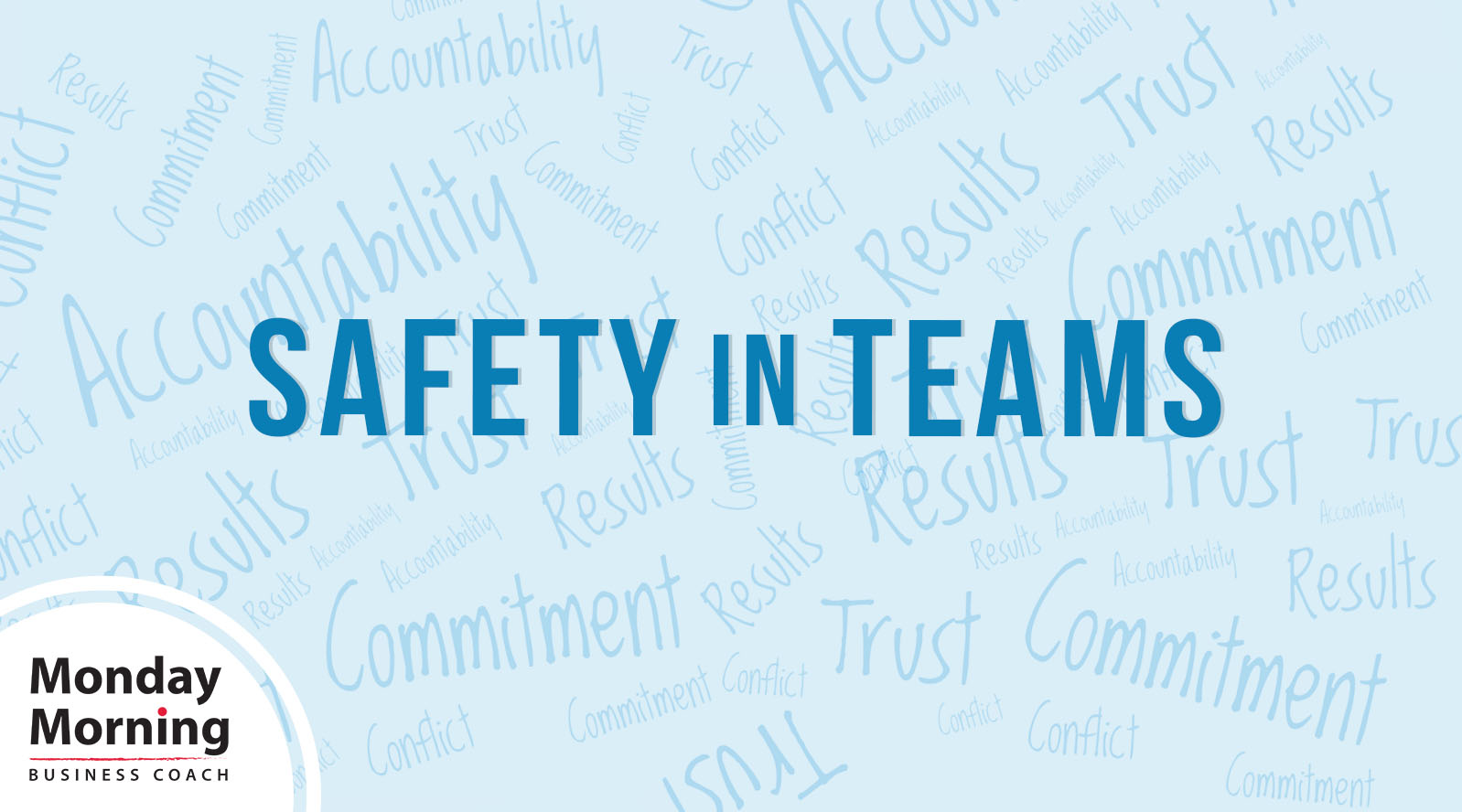Over the past two weeks, we’ve been talking about Psychological Safety and its importance in creating individual, team, and organizational success.
This week, we’re talking about a model of creating effective teams that comes from the book The 5 Dysfunctions of a Team, by Patrick Lencioni. It’s now the basis for a powerful team assessment called The 5 Behaviors of a Cohesive Team® Powered by Everything DiSC®.
Below is a visual summary of how Lencioni describes the behaviors that create effective teams. Understanding this model can help you to see the importance of psychological safety in your interactions with individuals, teams, and organizations.

In looking at this model, you’ll see that everything that creates success in a team is built on the foundation of trust.
What’s interesting is the way Lencioni describes trust. Rather than talking about it in terms of predictable performance (i.e., people come to meetings, get work done on time, etc.), he talks about the critical nature of vulnerability-based trust.
“Vulnerability-based trust, is the trust
that you can be human, take risks,
ask questions, not know, acknowledge mistakes,
and take interpersonal risks.”
Sound familiar?
Long before the term psychological safety became popular, those of us who worked in leadership understood the critical nature of this kind of safety in creating success in the workplace. That safety has been referenced in many ways over the years, and vulnerable trust seems to be the most accurate description of what is needed to succeed.
What’s exciting about this model is that when you understand it, it guides how to think about moving from psychological safety in your teams to increasingly effective team behavior. It works like this:
- When you create a team where there is vulnerability-based trust, members show up fully, let others know what they need, share successes and challenges, and disagree with one another. They can trust that the relationships will remain intact.
- When members can trust that their relationships and their places in the organization are safe, they can have productive conflict that focuses on the problem as the problem and not the people as the problem. This allows for rich discussion and debate of ideas on how to move forward.
- When members can have rich discussion and debate of ideas, they can align and commit to a course of action—action that has been fully thought through and discussed. It has true commitment.
- When members have committed to a course of action, they know what they’re accountable to as individuals and as a team, and they’re more comfortable holding one another accountable to the shared plan.
- When members are able to commit to action and hold themselves and their colleagues accountable, they can get unprecedented results that are good for the entire team.
And, it’s all built on psychological safety!
This week, think about these different levels of team behavior and where you think your team succeeds and struggles.
Let us know how it goes.
If you’d like to take a deeper look
at your team’s cohesiveness, contact us today
about doing the 5 Behaviors of Effective Teams
assessment in your organization.


